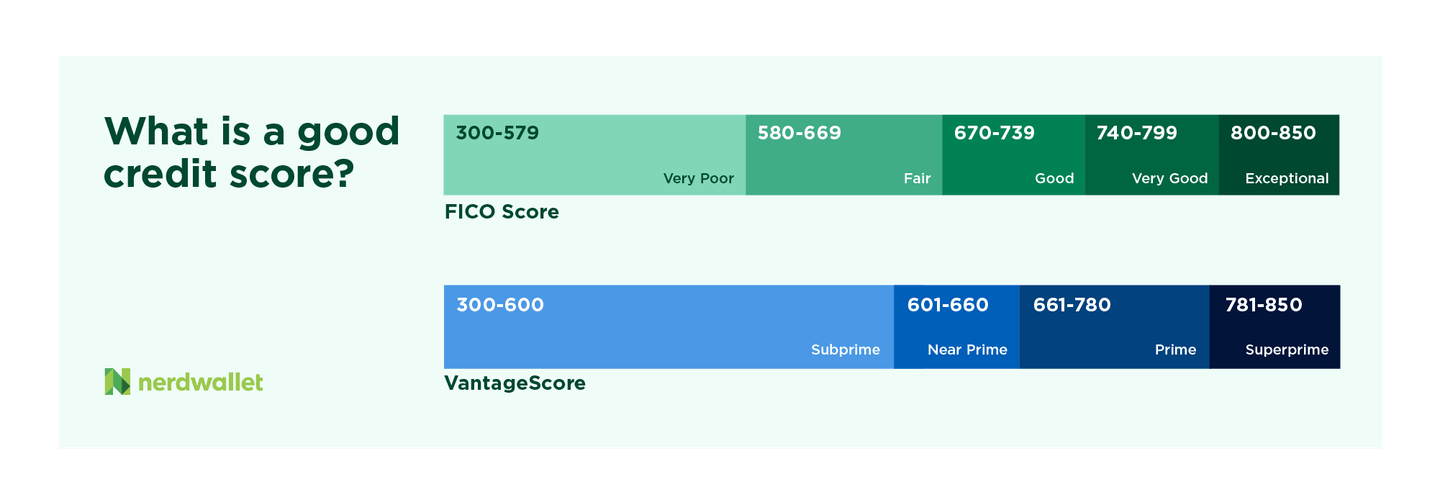What Is the Average Credit Score in the U.S.?
The average U.S. credit score is 717 for the FICO 8 score and 699 for the VantageScore 3.0. FICO and VantageScore are the two biggest companies calculating Americans' credit scores.

Many, or all, of the products featured on this page are from our advertising partners who compensate us when you take certain actions on our website or click to take an action on their website. However, this does not influence our evaluations. Our opinions are our own. Here is a list of our partners and here's how we make money.
When checking your credit score, you might wonder how you stack up against others. Here’s a look at the average credit score in the U.S., plus what might be driving recent score changes.
What is the average credit score?
Because there are two major credit scoring companies, FICO and VantageScore, there isn’t a single average credit score in the U.S.
The average FICO 8 credit score was 717 as of October 2024, FICO reported in its most recent data release. The average VantageScore 3.0 was 699 as of January 2025, according to Atif Mirza, a senior vice president at VantageScore.
There are some similarities and differences between these two scoring models. Both FICO and VantageScore use a 300 to 850 scale. They consider the same credit scoring factors but weight them in slightly different ways. For example, payment history makes up 40% of VantageScore’s calculation but only 35% of a FICO score. These slight differences mean that your FICO and VantageScores will vary.

The latest average FICO score of 717 is considered "good" by FICO's standards — any score between 670 and 799. The newest average VantageScore 3.0 of 699 falls in the "prime" range, defined as scores between 661 and 780. It's also a good score. » MORE: What’s a “good” credit score?
How are credit scores affected by changes in the economy?
Fluctuations in average credit scores can be influenced by various factors. Increased spending during annual events and holidays often leads to higher credit utilization and debt, which can, in turn, lower credit scores.
This trend appears in the newest VantageScore data.
“Because Thanksgiving fell late in 2024, a significant portion of credit balances were reported in December 2024,” Mirza said in an email interview. “The combined effect of increases in balances and high utilization rates may have contributed to the decline in the average VantageScore 3.0.”
External circumstances, such as rising prices and higher interest rates can also negatively affect credit scores. According to FICO, consumer debt levels and missed payments continue to rise. This analysis aligns with New York Fed data, which reports that total household debt increased by $93 billion in the fourth quarter of 2024.
Unfortunately, these two things — your payment history and credit utilization — weigh the heaviest in score calculations:
It’s crucial to pay every bill, not just credit cards, on time. A missed payment of more than 30 days can stay on your credit reports for up to seven years, and this negative mark will drop your score. Automate payments and group bills together to make it easier to remember due dates. Mistakes happen to even the most diligent consumer — a goodwill letter to your lender can be a last resort to getting a late payment removed from your credit reports.
Your goal should be to use 30% or less of your credit limits. Once your spending starts creeping above that threshold, your credit takes a hit. Paying your balances in full — not just making minimum payments — will keep your debt low.
How can I build my credit?
Check your credit health by looking over your credit reports. You are entitled to a free credit report from each credit bureau every week from annualcreditreport.com.
Incorrect information on your credit reports can negatively impact your credit. Look for things like a name or account you don't recognize, or an incorrect balance on one of your accounts. You should dispute credit report errors with the credit bureaus. Check back to make sure inaccurate information is removed on time. Credit bureaus have 30 to 45 days to investigate your request.
Then, monitor your credit frequently to assess your progress. You can get your free credit report and credit score, updated weekly, from NerdWallet.


